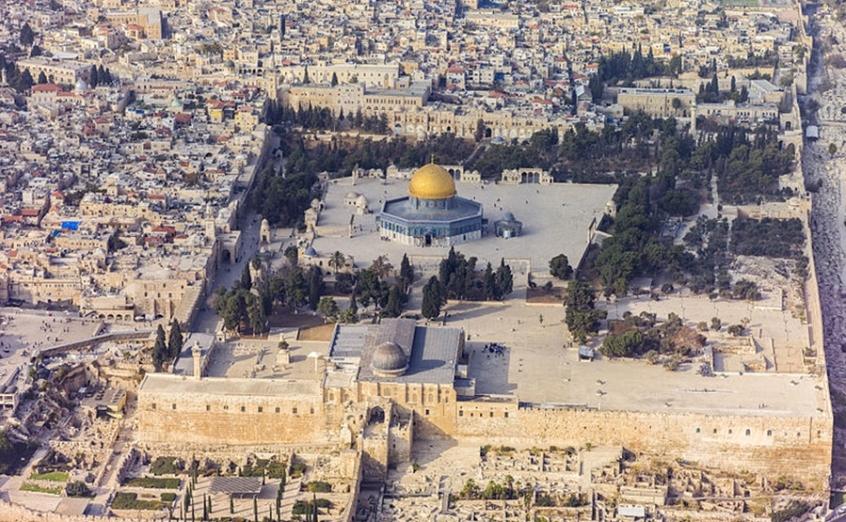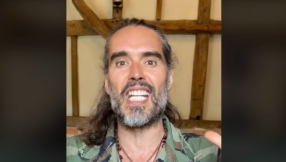An imprint by the prophet Isaiah himself may have created an 8th century BC seal impression discovered in First Temple remains near Jerusalem's Temple Mount, according to a respected archaeologist at the Hebrew University, Dr Eilat Mazar.
'We appear to have discovered a seal impression, which may have belonged to the prophet Isaiah, in a scientific, archaeological excavation,' said Mazar this week in a statement reported by the Times of Israel.
Mazar's team found the minuscule clay bulla, or seal impression, during renewed excavations at the Ophel, which is located at the foot of the southern wall of the Temple Mount in Jerusalem.

News of the discovery was published yesterday in an article titled 'Is This the Prophet Isaiah's Signature?' in a special March-June issue of the Biblical Archaeology Review (BAR).
The oval-shaped impression is inscribed with letters and what appears to be a grazing doe, which, according to the BAR article, is 'a motif of blessing and protection found in Judah, particularly in Jerusalem'.
The impression is not intact. But on its legible section, there is an inscription with First Temple Hebrew letters that appear to spell out the name l'Yesha'yah[u] (Belonging to Isaiah). And on a line below, there is the partial word nvy, which is thought to spell out 'prophet'.
Mazar said: 'Because the bulla has been slightly damaged at the end of the word nvy, it is not known if it originally ended with the Hebrew letter aleph, which would have resulted in the Hebrew word for "prophet" and would have definitively identified the seal as the signature of the prophet Isaiah.'
In the BAR article, Mazar leaves open the possibility that the inscription on the impression does not refer to the biblical prophet. The article says: 'Without an aleph at the end, the word nvy is most likely just a personal name. Although it does not appear in the Bible, it does appear on seals and a seal impression on a jar handle, all from unprovenanced, private collections.'
But it adds: 'The name of Isaiah, however, is clear.'
Isaiah is believed by scholars to have been active in around the late 8th century and early 7th century BC.
The impression was discovered in wet-sifted material that was taken from an Iron Age layer close to bedrock that was near a foundation trench cut for a wall of a Herodian vault. The material was found near a structure that was first discovered in 1986-87, and is today believed to have been a 'royal bakery'.
And it was found a mere 10 feet away from where, in 2015, Mazar's team discovered a separate, intact impression with the inscription 'of King Hezekiah of Judah'. King Hezekiah, the 12th king of the Kingdom of Judah, ruled from circa 727 BC-698 BC, during the period in which the northern Kingdom of Israel fell to the Assyrians in 721 BCE. Hezekiah successfully fought off the Assyrian siege of Jerusalem some 20 years later, thanks in part to fortifications and a water channel which can still be seen today.
Mazar called that artefact 'the closest as ever that we can get to something that was most likely held by King Hezekiah himself'.
Now, she says that it is logical that the Isaiah and Hezekiah impressions would be discovered in such close proximity.
'If it is the case that this bulla is indeed that of the prophet Isaiah, then it should not come as a surprise to discover this bulla next to one bearing King Hezekiah's name given the symbiotic relationship of the prophet Isaiah and King Hezekiah described in the Bible,' said Mazar.
There are several instances in the Bible of interactions between Isaiah and Hezekiah which indicate the prophet was a spiritual adviser to the king, the Times of Israel noted.
He assured the king that the Israelites would survive the siege. Mazar writes in the Bar article: 'The names of King Hezekiah and the prophet Isaiah are mentioned in one breath 14 of the 29 times the name of Isaiah is recalled (2 Kings 19–20; Isaiah 37–39). No other figure was closer to King Hezekiah than the prophet Isaiah.'













